Regionalization of Daily Soil Moisture Dynamics Using Wavelet-Based Multiscale Entropy and Principal Component Analysis
Abstract
1. Introduction
2. Data and Methodology
2.1. Data
2.2. Wavelet Transform
2.3. Multi-Scale Wavelet Entropy
2.4. Principal Component Analysis
3. Results
3.1. Multi-Scale Variability Of The Grid-Based Soil Moisture
3.2. Hydrological Regionalization
4. Discussion
5. Conclusions
Author Contributions
Funding
Acknowledgments
Conflicts of Interest
References
- Pearl River Water Resources Commission. Pearl River Flood Prevention Handbook; Pearl River Water Resources Commission: Guangzhou, China, 2005; p. 150. (In Chinese) [Google Scholar]
- Pearl River Hydraulic Research Institute. Drought Monitor and Assessment Reports for the Pearl River Basin Using Remote Sensing; Pearl River Hydraulic Research Institute: Guangzhou, China, 2007; p. 60. (In Chinese) [Google Scholar]
- Niu, J.; Chen, J. Terrestrial hydrological features of the Pearl River basin in South China. J. Hydro-Environ. Res. 2010, 4, 279–288. [Google Scholar] [CrossRef]
- Sivakumar, B.; Singh, V.P.; Berndtsson, R.; Khan, S.K. Catchment classification framework in hydrology: challenges and directions. J. Hydrol. Eng. 2015, 20, 1–12. [Google Scholar] [CrossRef]
- Agarwal, A.; Maheswaran, R.; Sehgal, V.; Khosa, R.; Sivakumar, B.; Bernhofer, C. Hydrologic regionalization using wavelet-based multiscale entropy method. J. Hydrol. 2016, 538, 22–32. [Google Scholar] [CrossRef]
- Niu, J.; Chen, J.; Wang, K.Y.; Sivakumar, B. Coherent modes in multi-scale variability of precipitation over the headwater catchments in the Pearl River basin, South China. Hydrol. Processes 2017, 31, 948–955. [Google Scholar] [CrossRef]
- Saco, P.; Kumar, P. Coherent modes in multiscale variability of streamflow over the United States. Water Resour. Res. 2000, 36, 1049–1067. [Google Scholar] [CrossRef]
- Yadav, M.; Wagener, T.; Gupta, H. Regionalization of constraints on expected watershed response behavior for improved predictions in ungauged basins. Adv. Water Resour. 2007, 30, 1756–1774. [Google Scholar] [CrossRef]
- Sohoulande, C.D.; Stone, K.; Singh, V.P. Quantifying the probabilistic divergences related to time-space scales for inferences in water resource management. Agric. Water Manag. 2019, 217, 282–291. [Google Scholar] [CrossRef]
- Armanuos, A.M.; Negm, A. Groundwater Quality Investigation Using Multivariate Analysis: Case Study: Western Nile Delta Aquifer, Egypt. Int. J. Environ. Sci. Dev. 2016, 7, 1. [Google Scholar] [CrossRef]
- Chang, S.K.; Lee, D.H.; Wu, J.H.; Juang, C.H. Rainfall-based criteria for assessing slump rate of mountainous highway slopes: A case study of slopes along highway 18 in Alishan, Taiwan. Eng. Geol. 2011, 118, 63–74. [Google Scholar] [CrossRef]
- Lin, H.M.; Chang, S.K.; Wu, J.H.; Juang, C.H. Neural network-based model for assessing failure potential of highway slopes in the Alishan, Taiwan area: pre- and post-earthquake investigation. Eng. Geol. 2009, 104, 280–289. [Google Scholar] [CrossRef]
- Lee, Y.F.; Chi, Y.Y.; Lee, D.H.; Juang, C.H.; Wu, J.H. Simplified models for assessing annual liquefaction probability—a case study of the Yuanlin area, Taiwan. Eng. Geol. 2007, 90, 71–88. [Google Scholar] [CrossRef]
- Zoppou, C.; Nielsen, O.M.; Zhang, L. Regionalization of Daily Streamflow in Australia Using Wavelets and k-means Analysis; CMA Research Report MRR02-003; Australian National University: Canberra, Australia, 2002. [Google Scholar]
- Shannon, C.E. A mathematical theory of communication. Bell Syst. Tech. J. 1948, 27, 379–423. [Google Scholar] [CrossRef]
- Jaynes, E.T. Information Theory and Statistical Mechanics, I. Phys. Rev. 1957, 106, 620–630. [Google Scholar] [CrossRef]
- Jaynes, E.T. Information and statistical mechanics, II. Phys. Rev. 1957, 108, 171–190. [Google Scholar] [CrossRef]
- Singh, V.P. The use of entropy in hydrology and water resources. Hydrol. Processes 1997, 11, 587–626. [Google Scholar] [CrossRef]
- Sivakumar, B. Chaos theory in hydrology: Important issues and interpretations. J. Hydrol. 2000, 227, 1–20. [Google Scholar] [CrossRef]
- Cui, H.; Singh, V.P. Computation of suspended sediment discharge in open channels using Tsallis entropy. J. Hydrol. Eng. 2013, 19, 18–25. [Google Scholar] [CrossRef]
- Singh, V.P. Entropy Theory in Hydrologic Science and Engineering; McGraw-Hill Education: New York, NY, USA, 2015. [Google Scholar]
- Cui, H.; Singh, V.P. Configurational entropy theory for streamflow forecasting. J. Hydrol. 2015, 521, 1–7. [Google Scholar] [CrossRef]
- Cui, H.; Singh, V.P. Minimum relative entropy theory for streamflow forecasting with frequency as a random variable. Stoch. Environ. Res. Risk Assess. 2016, 30, 1545–1563. [Google Scholar] [CrossRef]
- Sivakumar, B. Chaos Identification and Prediction Methods. In Chaos in Hydrology; Springer: Dordrecht, The Netherlands, 2017; pp. 173–197. [Google Scholar]
- Niu, J.; Chen, J.; Sun, L.Q.; Sivakumar, B. Time-lag effects of vegetation responses to soil mositure evolution: A case study in the Xijiang basin in South China. Stoch. Environ. Res. Risk Assess. 2018, 32, 2423–2432. [Google Scholar] [CrossRef]
- Liang, X.; Lettenmaier, D.P.; Wood, E.F.; Burges, S.J. A simple hydrologically based model of land surface water and energy fluxes for general circulation models. J. Geophys. Res. 1994, 99, 14415–14428. [Google Scholar] [CrossRef]
- Niu, J.; Chen, J.; Sun, L. Major drought events in the West River basin in South China for the period of 2002–2010. In Proceedings of the 35th IAHR World Congress, Chengdu, China, 8–13 September 2013. [Google Scholar]
- Niu, J.; Chen, J.; Sun, L.Q. Exploration of drought evolution using numerical simulations over the Xijiang (West River) basin in South China. J. Hydrol. 2015, 526, 68–77. [Google Scholar] [CrossRef]
- Niu, J.; Chen, J. Terrestrial hydrological responses to precipitation variability in Southwest China with emphasis on drought. Hydrol. Sci. J. 2014, 59, 325–335. [Google Scholar] [CrossRef][Green Version]
- Labat, D. Wavelet analyses in hydrology. In Advances in Data-Based Approaches for Hydrologic Modeling and Forecasting; Sivakumar, B., Berndtsson, R., Eds.; World Scientific Publishing Company: Singapore, 2010; pp. 371–410. [Google Scholar]
- Torrence, C.; Compo, G.P. A practical guide to wavelet analysis. Bull. Am. Meteorol. Soc. 1998, 79, 62–78. [Google Scholar] [CrossRef]
- Cek, M.E.; Ozgoren, M.; Savaci, F.A. Continuous time wavelet entropy of auditory evoked potentials. Comput. Biol. Med. 2009, 40, 90–96. [Google Scholar]
- Sang, Y.F.; Wang, D.; Wu, J.C.; Zhu, Q.P.; Wang, L. Wavelet-based analysis on the complexity of hydrologic series data under multi-temporal scales. Entropy 2011, 13, 195–210. [Google Scholar] [CrossRef]
- Jackson, J.E. A User’s Guide to Principle Components; John Wiley: New York, NY, USA, 1991; p. 569. [Google Scholar]
- Wilks, D.S. Statistical Methods in the Atmospheric Sciences; Academic Press: San Diego, CA, USA, 1995; p. 467. [Google Scholar]
- Niu, J. Precipitation in the Pearl River basin, South China: Scaling, regional patterns, and influence of large-scale climate anomalies. Stoch. Environ. Res. Risk Assess. 2013, 27, 1253–1268. [Google Scholar] [CrossRef]
- Djebou, D.C.S. Toward an integrated watershed zoning framework based on the spatio-temporal variability of land-cover and climate: Application in the Volta river basin. Environ. Dev. 2018, 28, 55–66. [Google Scholar] [CrossRef]
- Sohoulande, C.; Singh, V.P. Entropy-based index for spatiotemporal analysis of streamflow, precipitation, and land-cover. J. Hydrol. Eng. 2016, 21, 05016024. [Google Scholar] [CrossRef]
- Djebou, D.C.S.; Singh, V.P. Retrieving vegetation growth patterns from soil moisture, precipitation and temperature using maximum entropy. Ecol. Model. 2015, 309, 10–21. [Google Scholar] [CrossRef]
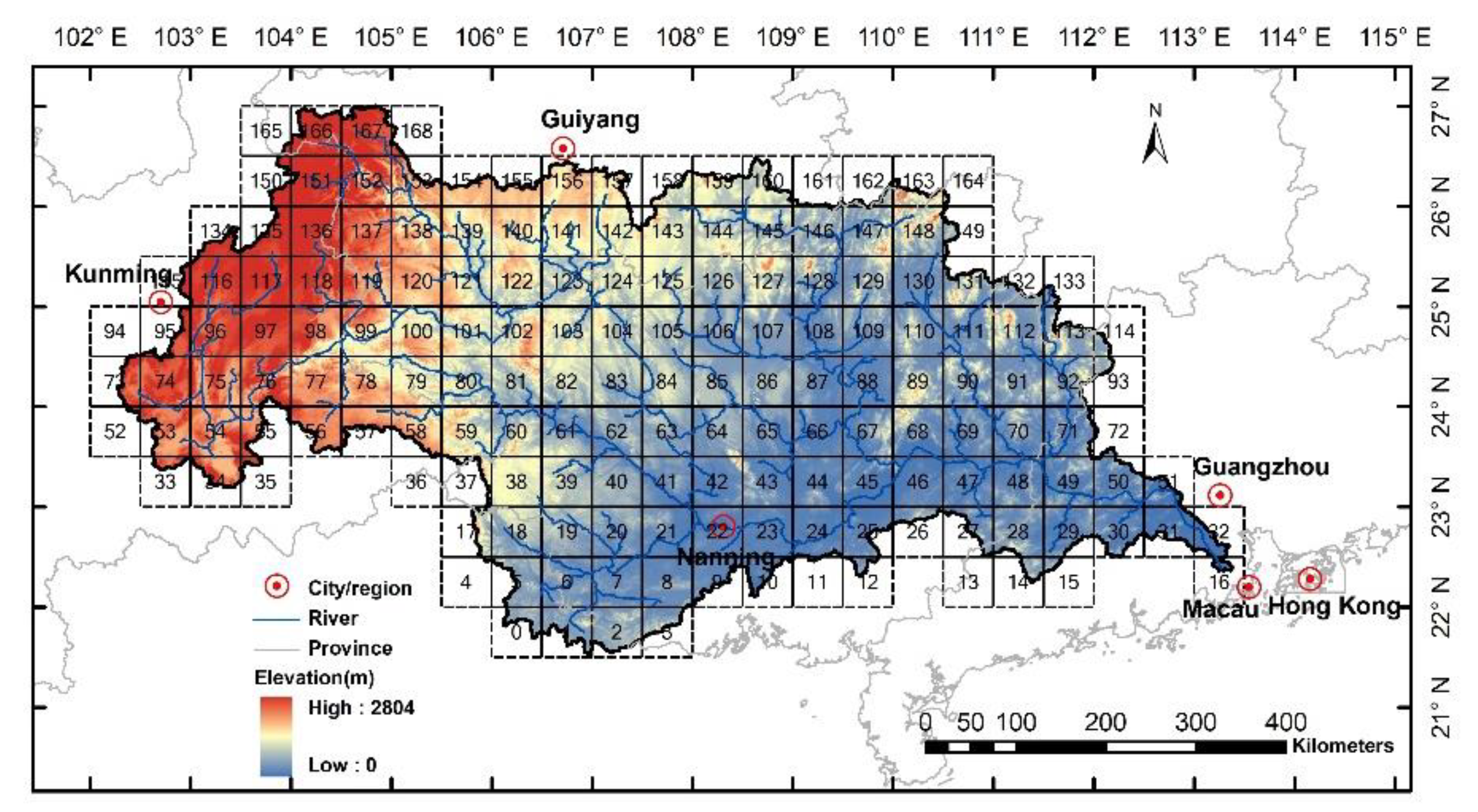
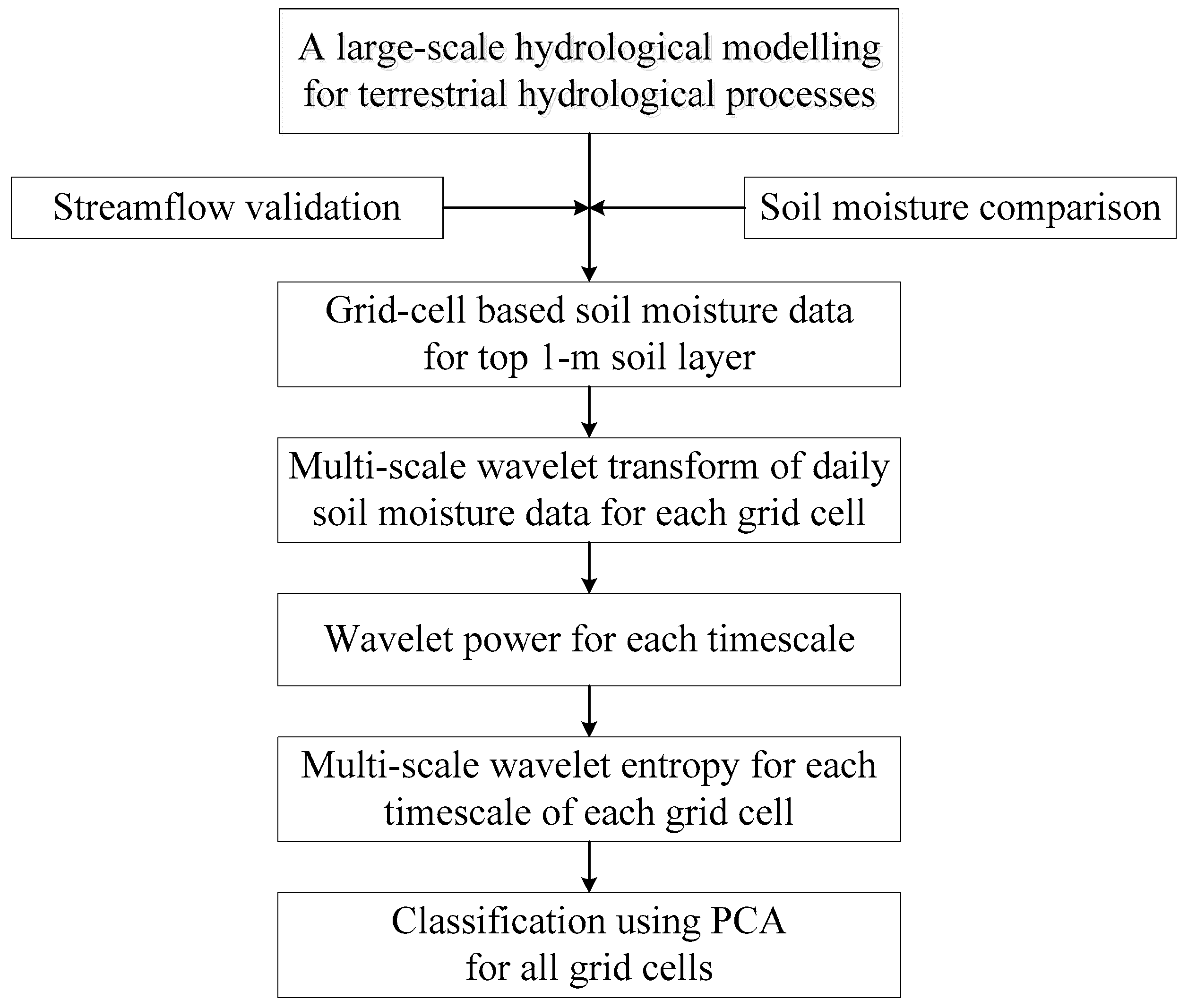
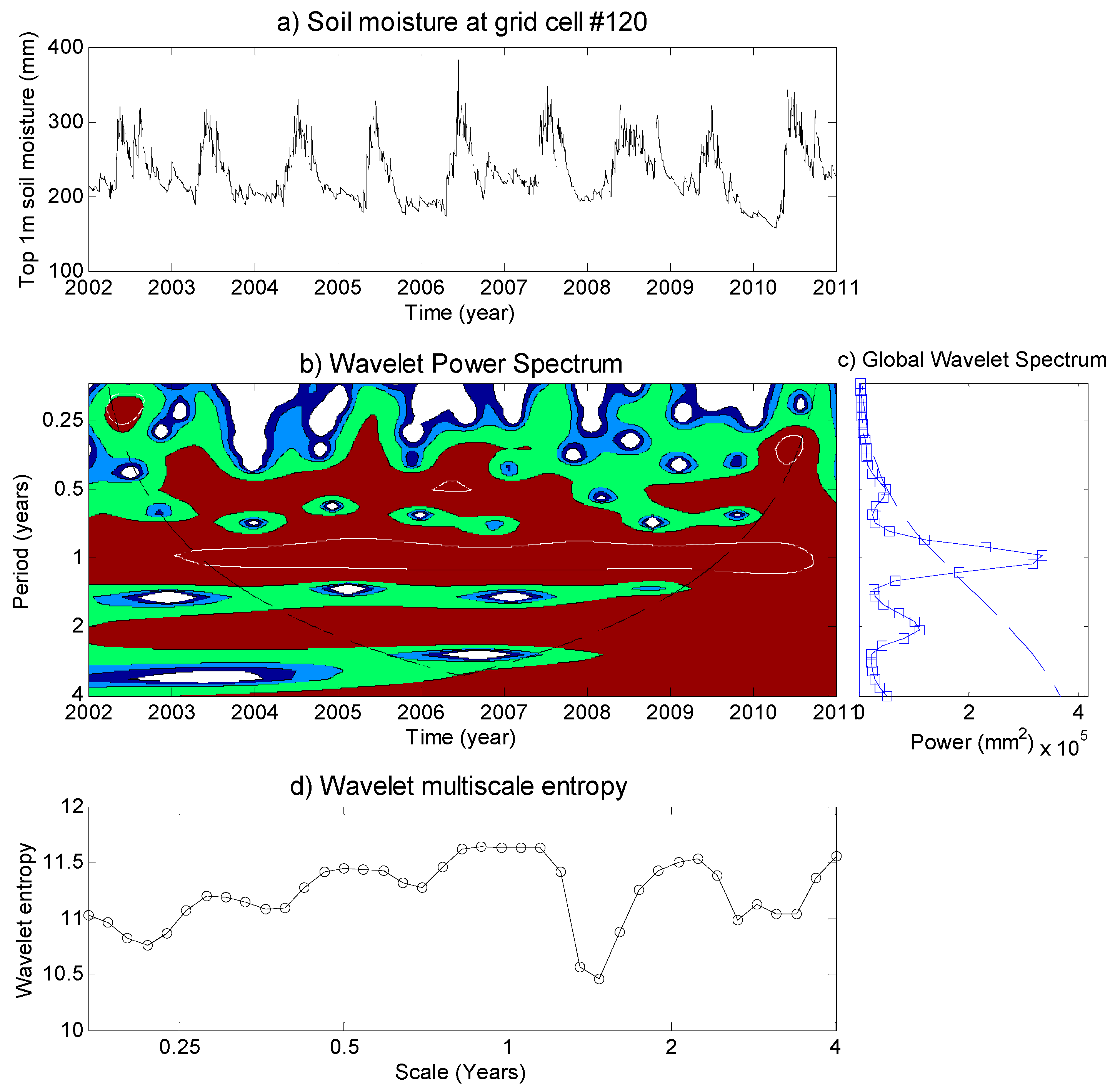
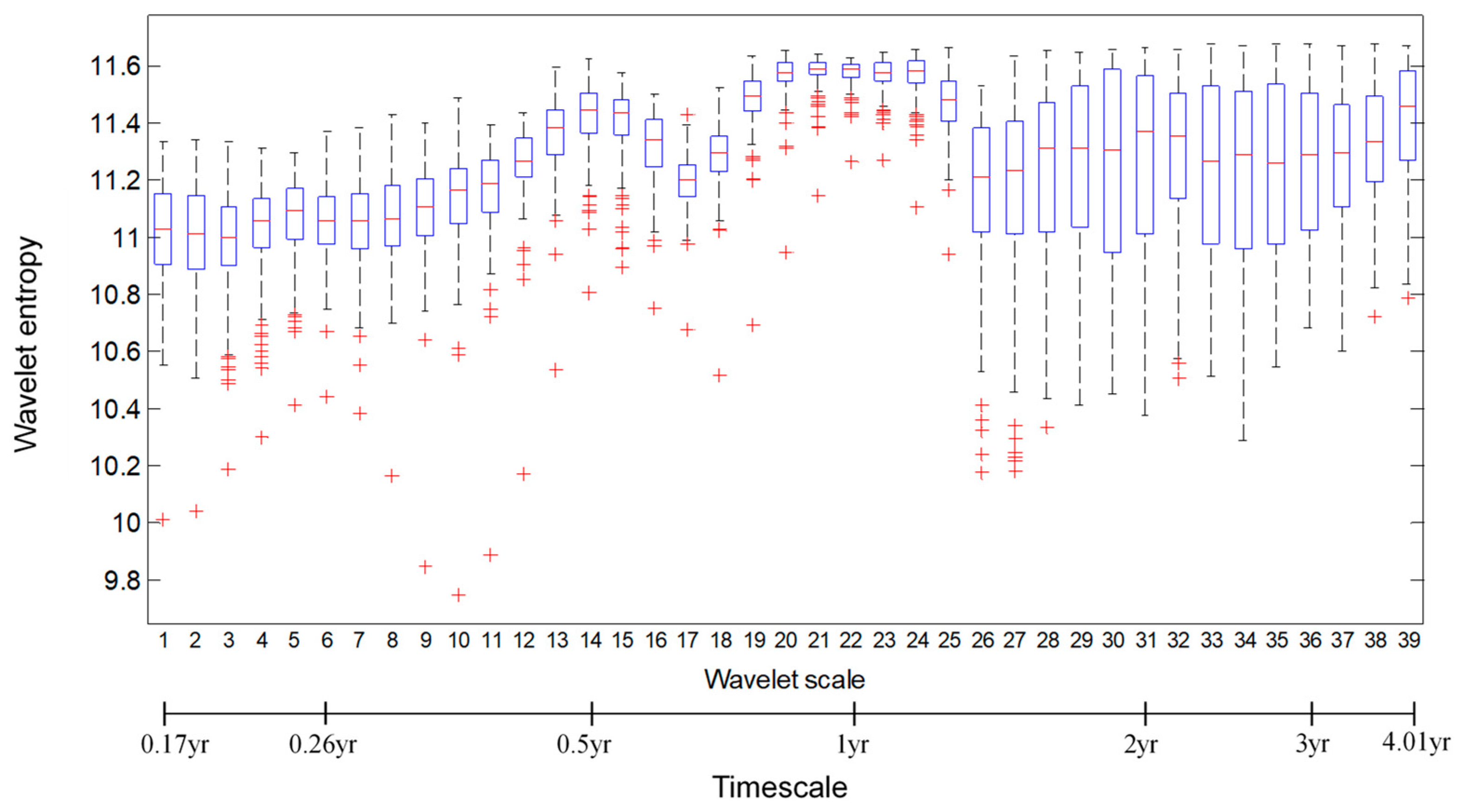
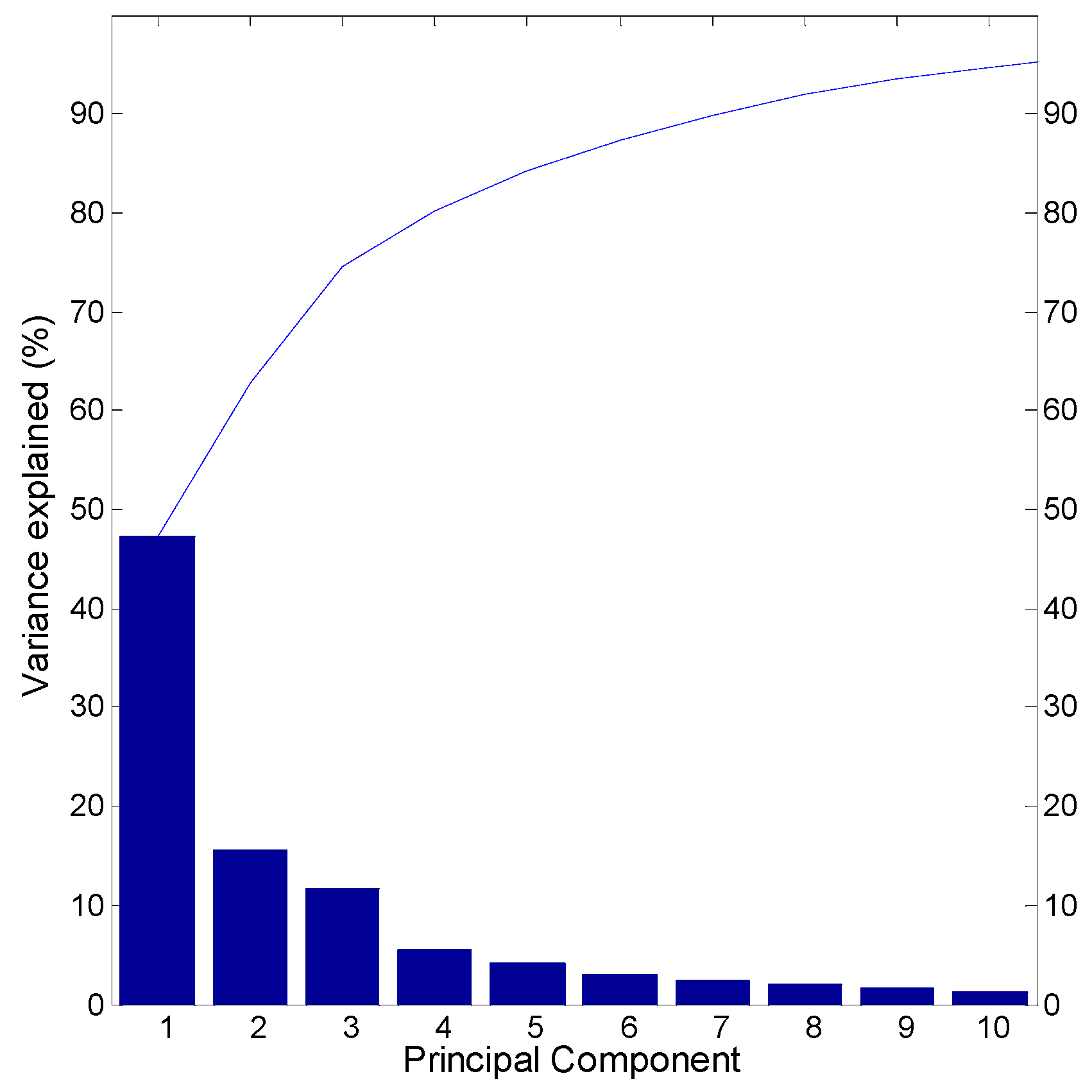
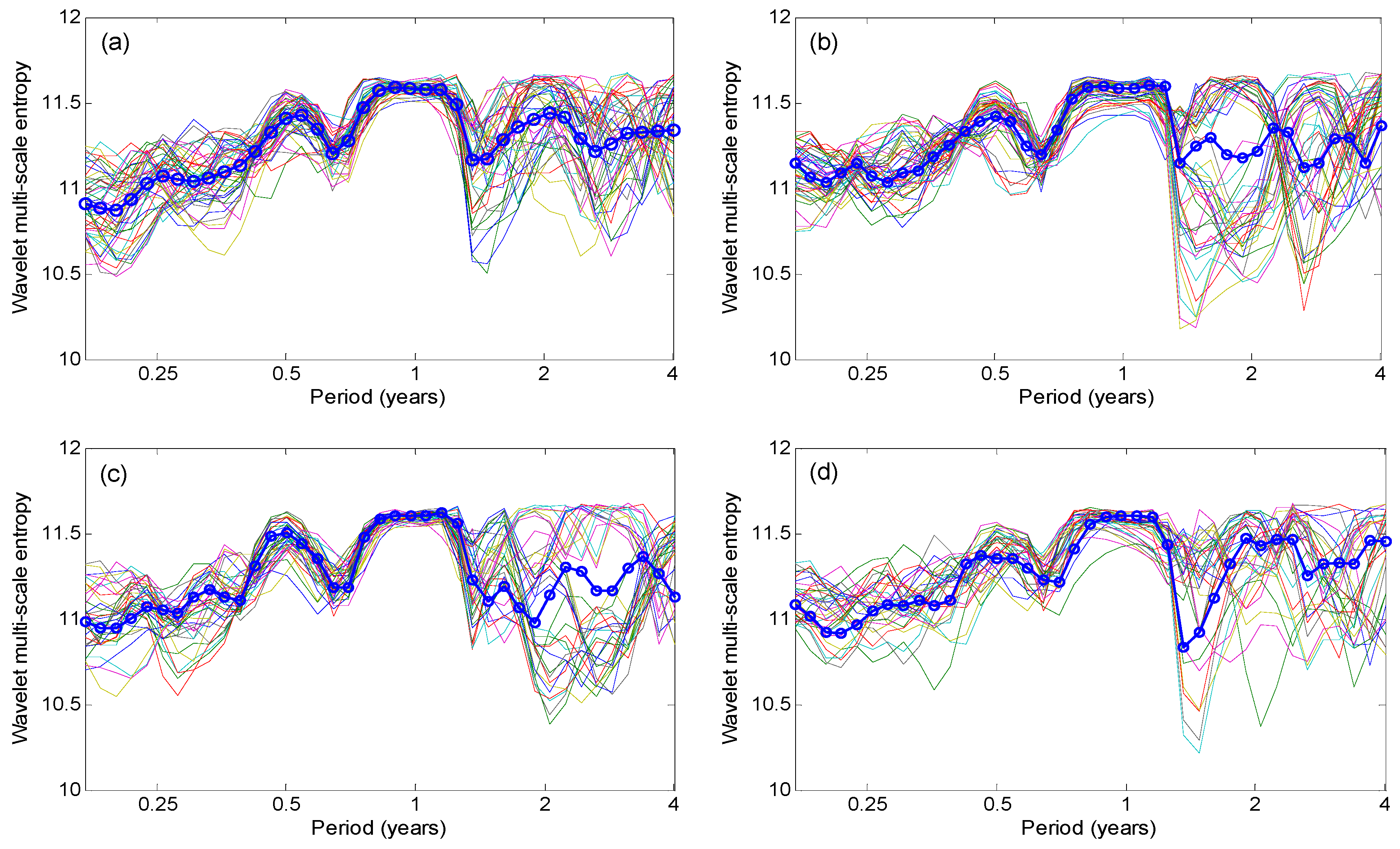
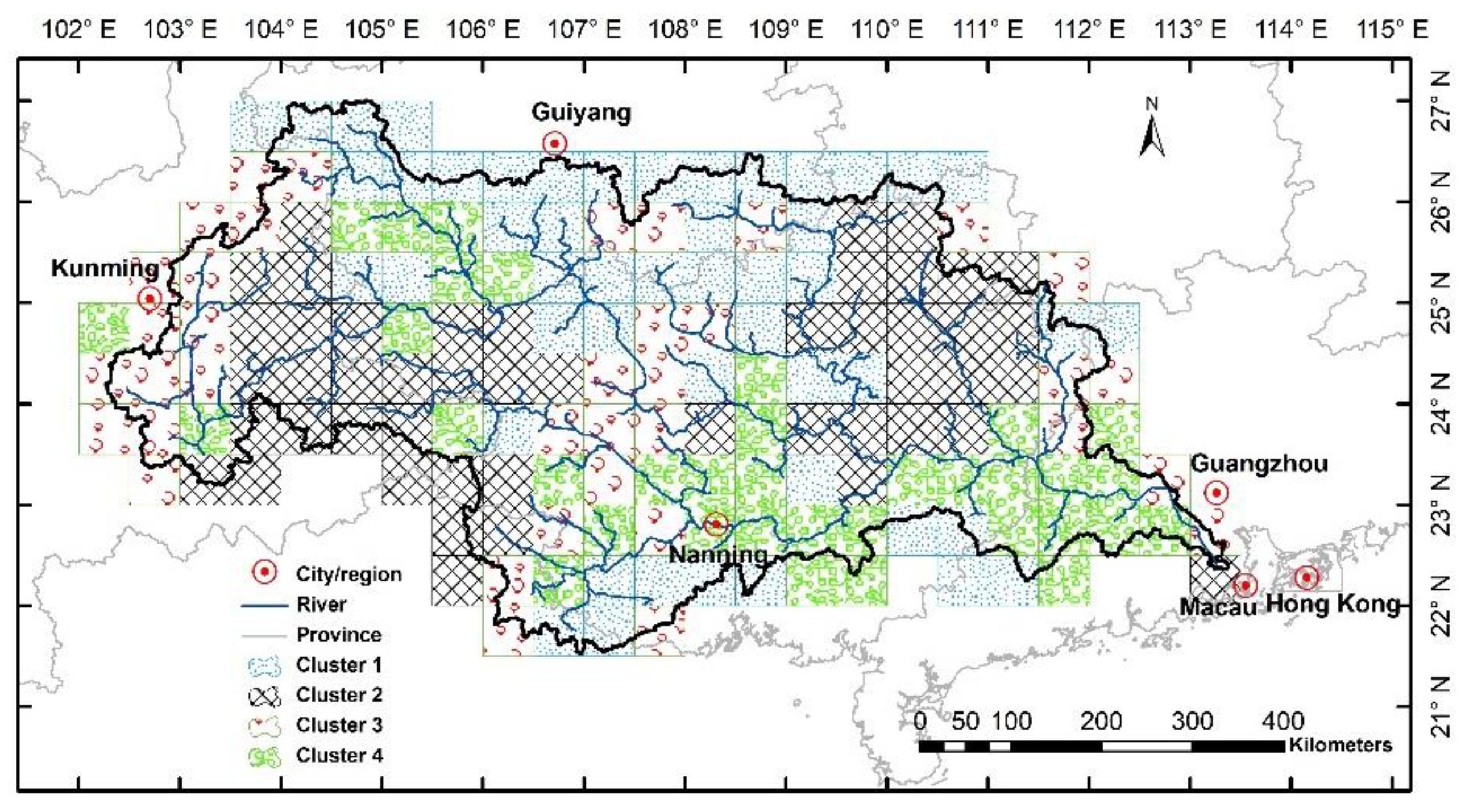
| Measures | PC1 | PC2 | PC3 | PC4 | PC5 | PC6 | PC7 | PC8 | PC9 | PC10 |
|---|---|---|---|---|---|---|---|---|---|---|
| Eigenvalues | 79.81 | 26.26 | 19.91 | 9.46 | 7.01 | 5.21 | 4.23 | 3.41 | 2.73 | 1.97 |
| Proportions of variance | 47.22 | 15.54 | 11.78 | 5.60 | 4.15 | 3.08 | 2.50 | 2.02 | 1.62 | 1.17 |
| Cumulative proportions of variance | 47.22 | 62.76 | 74.54 | 80.14 | 84.29 | 87.37 | 89.87 | 91.88 | 93.50 | 94.67 |
© 2019 by the authors. Licensee MDPI, Basel, Switzerland. This article is an open access article distributed under the terms and conditions of the Creative Commons Attribution (CC BY) license (http://creativecommons.org/licenses/by/4.0/).
Share and Cite
Sun, Y.; Niu, J. Regionalization of Daily Soil Moisture Dynamics Using Wavelet-Based Multiscale Entropy and Principal Component Analysis. Entropy 2019, 21, 548. https://doi.org/10.3390/e21060548
Sun Y, Niu J. Regionalization of Daily Soil Moisture Dynamics Using Wavelet-Based Multiscale Entropy and Principal Component Analysis. Entropy. 2019; 21(6):548. https://doi.org/10.3390/e21060548
Chicago/Turabian StyleSun, Yuqing, and Jun Niu. 2019. "Regionalization of Daily Soil Moisture Dynamics Using Wavelet-Based Multiscale Entropy and Principal Component Analysis" Entropy 21, no. 6: 548. https://doi.org/10.3390/e21060548
APA StyleSun, Y., & Niu, J. (2019). Regionalization of Daily Soil Moisture Dynamics Using Wavelet-Based Multiscale Entropy and Principal Component Analysis. Entropy, 21(6), 548. https://doi.org/10.3390/e21060548





